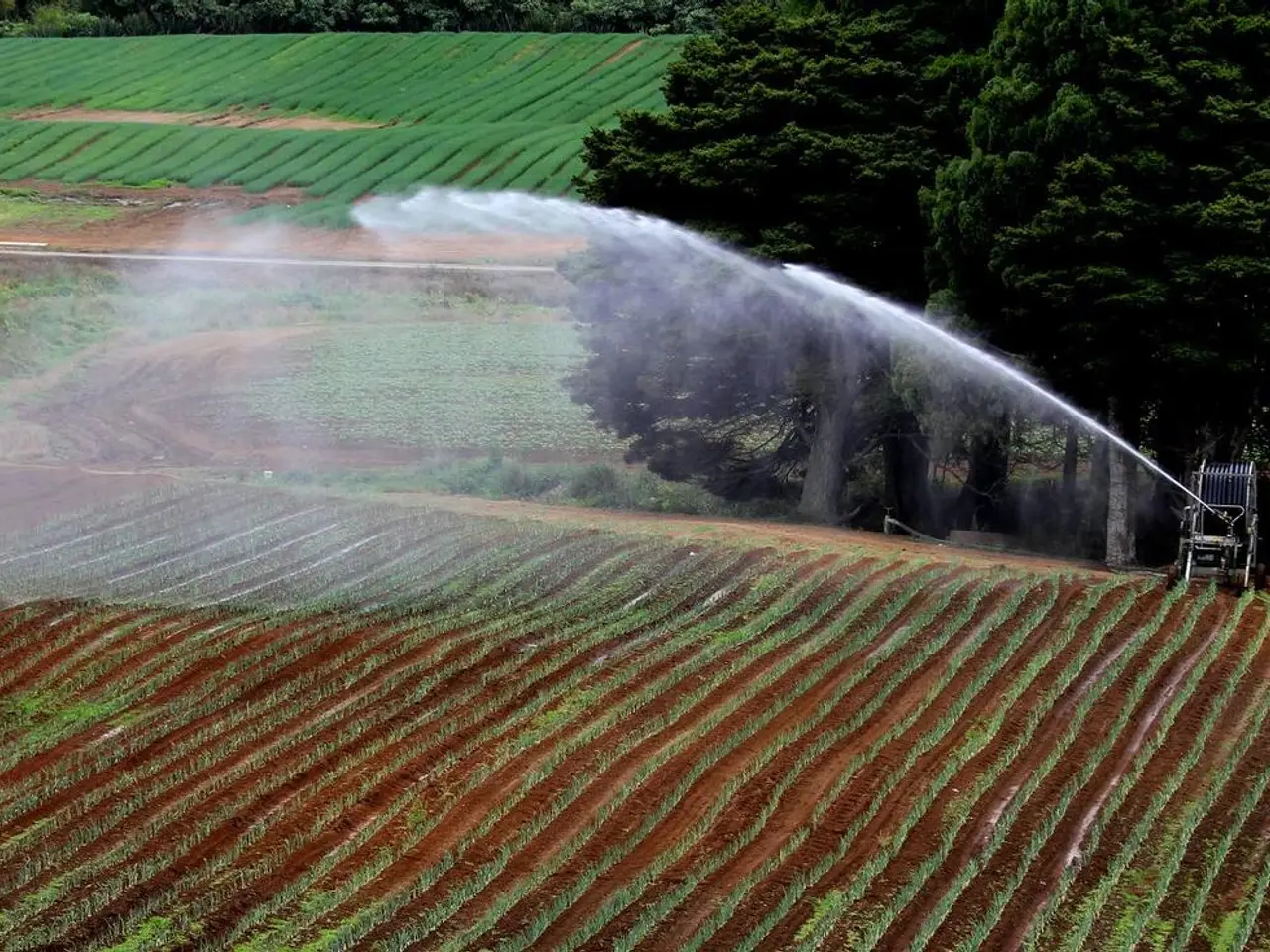India's patriotic state of Assam on the verge of becoming autonomous oil producers within the country.
Assam, a northeastern state in India, has made a significant stride in its oil economy, becoming the first Indian state to directly produce and financially benefit from crude oil. This historic achievement was made possible through the discovery of the Namrup Borhat-1 hydrocarbon reserve, located in Dibrugarh district, and undertaken by Oil India Limited (OIL), a public sector enterprise under the Ministry of Petroleum and Natural Gas [1][2].
The discovery marks a shift from Assam's traditional role as a resource supplier to an active partner in oil production and revenue generation. With the Assam government holding a significant stake in OIL, this milestone represents a proud moment for the state, as highlighted by Chief Minister Himanta Biswa Sarma on social media [1][2].
For Assam, the implications are far-reaching. The state government will now benefit directly from crude oil production, not just through royalties but also from a share of the profits. This shift from limited royalties and taxes to direct revenue and royalty streams is expected to unlock new avenues for state-level revenue, provide fiscal resilience, and potentially fund local development projects, infrastructure, and social programs [1][3].
Assam's involvement in production also strengthens its energy security, giving the state greater control over its energy resources, which can support industrial growth and attract further investment in the energy sector [1][2].
On a national level, the Namrup Borhat-1 discovery has further solidified Assam's role in India's oil sector. In 2023–24, Assam produced 4,361 thousand metric tonnes (TMT) of crude oil, ranking third nationally after Rajasthan and Gujarat [1][3]. Over the past three years, Assam contributed 12,518 TMT to India's total onshore production of 42,145 TMT, with offshore production accounting for an additional 44,078 TMT during the same period [3].
Analysts view the Namrup Borhat-1 discovery as a strategic find that strengthens India's overall oil and gas sector, providing not just additional barrels but also a new model for state participation in hydrocarbon exploration and production [1][2]. The involvement of a state government as a direct producer may set a precedent for other resource-rich states, potentially leading to more decentralized and resilient energy production across India [1][3].
**Table: Assam’s Oil Production Context**
| Aspect | Detail | |-------------------------|------------------------------------------------------------------------| | 2023–24 Production | 4,361 TMT (third in India after Rajasthan, Gujarat)[1][3] | | 2021–24 Total | 12,518 TMT (onshore)[3] | | New Role | Direct state producer (equity stake in Namrup Borhat-1)[1][2] | | Historic Significance | First state government to produce and profit from crude[1][2] | | Previous Role | Resource supplier, royalty/tax recipient[3] | | Potential Impact | New revenue, economic resilience, model for other states[1][3] |
In summary, the discovery of the Namrup Borhat-1 hydrocarbon reserve in Assam has significant implications for the state and the nation. Assam's entry into direct crude oil production offers new revenue streams and greater control over its natural resources, while for India, it represents a quantitative boost to domestic production and a qualitative shift in how states can participate in the hydrocarbon sector, enhancing energy security and setting a precedent for future collaborations between central and state governments in resource development.
- The surge in Assam's oil economy through crude oil production and financial benefits is expected to contextualize its role in India's overall finance and investment landscape, attracing more investment in the energy sector.
- With the potential for increased revenue and investment, Assam's market value could experience growth, potentially influencing other resource-rich states to adopt a similar decentralized and resilient approach to energy production via Defi (decentralized finance) models.
- The Namrup Borhat-1 discovery has not only enhanced India's oil and gas sector but also infiltrated other markets, including sports and weather forecasting, as more sustainable energy production may generate environmental benefits, thereby reducing reliance on fossil fuels and affecting sports performance through healthier air quality and potentially influencing weather patterns.







